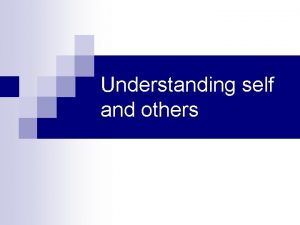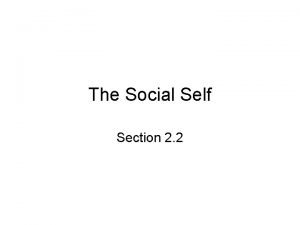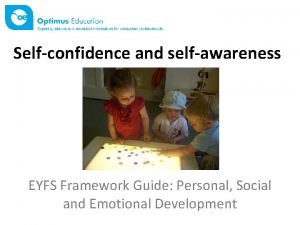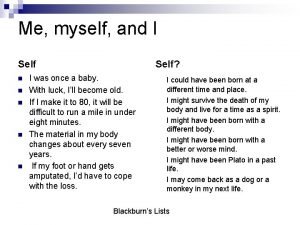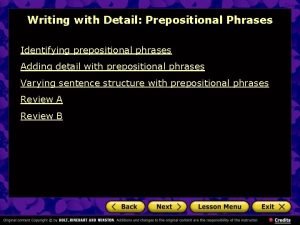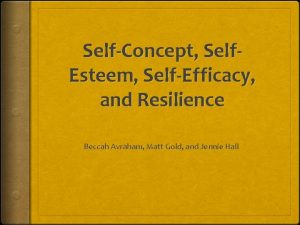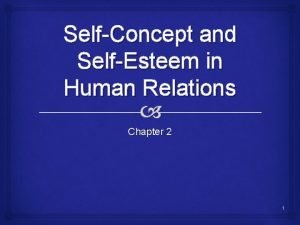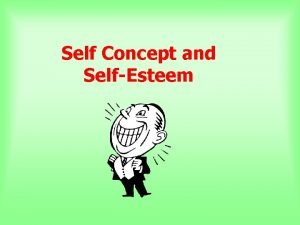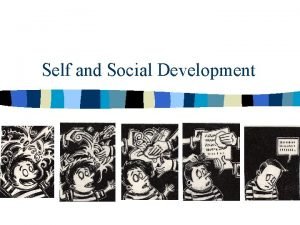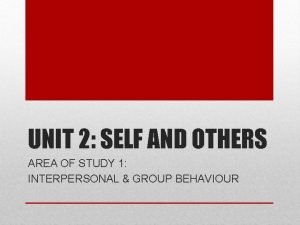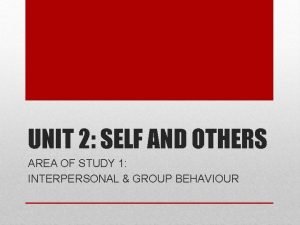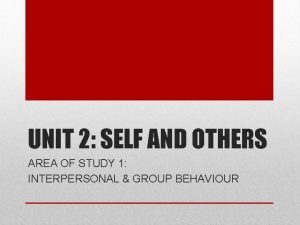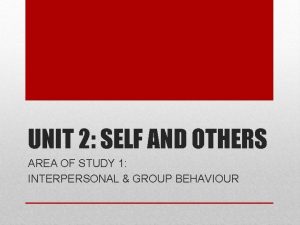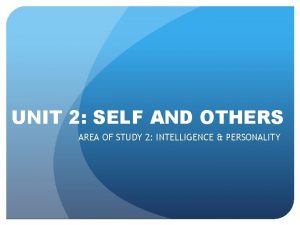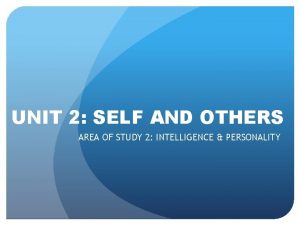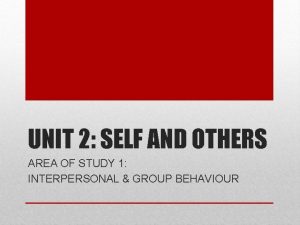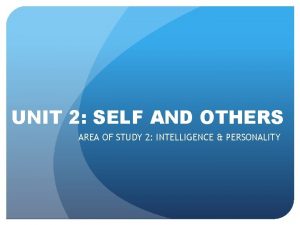UNIT 2 SELF AND OTHERS AREA OF STUDY













- Slides: 13

UNIT 2: SELF AND OTHERS AREA OF STUDY 2: INTELLIGENCE & PERSONALITY

TEST VALIDITY & TEST RELIABILITY TEST VALIDITY a test must measure what it measure 1. Content Validity 2. Criterion-Related Validity 3. Construct Validity is supposed to TEST RELIABILITY does it measure what it is supposed to consistently measure each time 1. Test-Retest Reliability 2. Parallel-Forms Reliability 3. Split-half Reliability 4. Internal Consistency

TEST VALIDITY 1. CONTENT VALIDITY The content of the test adequately measures what it is supposed to measure 2. CRITERION-RELATED VALIDITY The test can adequately predict performance on other tasks that require intelligence 3. CONSTRUCT VALIDITY The test provides a good reflection of theory upon which it is based. It’s results support that theory

TEST RELIABILITY 1. TEST RELIABILITY Give the intelligence test to the same group of people on two different occasions. The scores should be similar 2. PARALLEL-FORMS RELIABILITY Giving another version of the same test. If they measure the same thing, should get similar scores 3. SPLIT-HALF RELIABILITY Dividing the original test in half. Both halves should give similar scores

TEST RELIABILITY 4. INTERNAL CONSISTENCY All items within the test should produce similar scores on their own 5. INTER-RATER RELIABILITY Checking that different test administrators get similar results from the same test

TEST STANDARDISATION TESTS MUST FIRST BE ADMINISTERED TO A LARGE SAMPLE THAT ARE REPRESENTATIVE OF THE POPULATION OF INTEREST Eg. Same number of males and females These allow us to develop ‘test norms’

TEST NORMS ‘Test norms’ show the mean score on a test by a particular group of people (what most people get) Most ‘Intelligence Tests’ published in magazines or on the Internet are not standardised. This means the end scores are of little value, other than entertainment

STANDARDISED TESTING PROCEDURES The test must be given exactly the same way to every person that completes it If done so; Difference in performance = difference in test-takers ability NOT Difference in performance = difference in testing procedures If standardised testing procedures are NOT used than the results ARE NOT RELIABLE OR VALID!!!

HOMEWORK • LEARNING ACTIVITY 11. 22 (pg. 436)

CULTURE-BIASED CULTURE-FAIR TESTS CULTURAL BIAS = the tendency of a test to give a lower score to a person from a culture different from that on which the test was standardised CULTURE-FAIR TEST = attempts to provide items that will not disadvantage or penalise a test taker on the basis of their cultural or ethnic background MUST ALSO BE CAREFUL OF GENDER BIAS (AMONGST OTHERS) TRY THE KOORI IQ TEST ON PAGE 491

HOMEWORK • LEARNING ACTIVITY 11. 24 (pg. 438)

STRENGTHS & LIMITATIONS OF INTELLIGENCE TESTS STRENGTHS LIMITATIONS • Identify particular strengths and weaknesses of cognitive abilities of schoolchildren • Should not be used as the sole basis for a judgment about intellectual functioning • Psychologists accurately determine a child’s abilities by using scores on particular tests in conjunction with other tests • Intelligence tests only measure some of the abilities thought to be associated with intelligent behaviour • Care must be taken to avoid misrepresenting the intellectual capacity of individuals in certain ethnic or cultural groups • Caution must be taken when using intelligence tests to predict an individual’s potential

HOMEWORK • LEARNING ACTIVITY 11. 27 (pg. 439)
 The distance between the real self and the ideal self
The distance between the real self and the ideal self Managing self and others
Managing self and others Slidetodoc.com
Slidetodoc.com I self and me self difference
I self and me self difference Eyfs
Eyfs Thomas reid brave officer
Thomas reid brave officer Unit 6 review questions
Unit 6 review questions Vary preposition
Vary preposition Self concept vs self esteem
Self concept vs self esteem Self concept vs self esteem
Self concept vs self esteem Self concept vs self esteem
Self concept vs self esteem Self-concept
Self-concept It is the misalignment of the ideal and real self.
It is the misalignment of the ideal and real self. Contoh ideal self dan real self
Contoh ideal self dan real self


